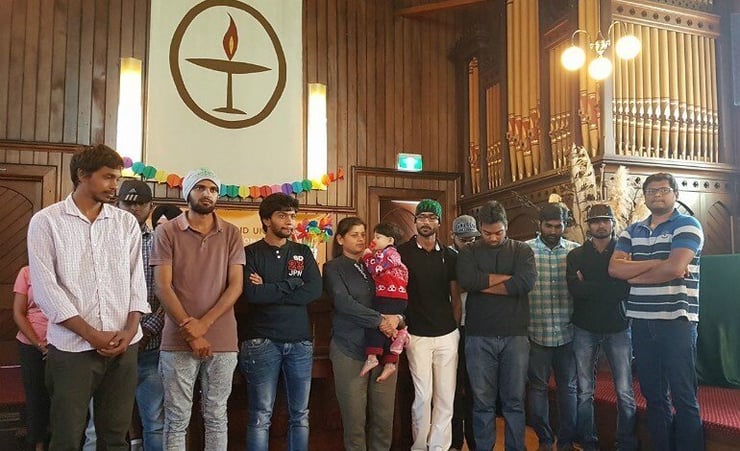Immigration scams: getting underneath “ministerial intervention”

The plight of nine Indian students and their families currently under a symbolic sanctuary in the Unitarian Church in Ponsonby continues to attract public and media attention; although much needed ministerial “help” does not appears to be in sight.
A spokeswoman for Immigration Minister Michael Woodhouse and Associate Minister David Bennett had said that the ministers had nothing further to add to Woodhouse's previous comments on the issue.
This had come after lawyer of these students received a notification on February 2, six months after the request for ministerial intervention was initially raised, informing that the minister had declined to intervene.
It was followed by a statement that the minister does not consider these students as a victim and will have to leave New Zealand.
Previously, on many occasions, other senior ministers in this government had repeatedly commented that the students bore the responsibility of making sure their documentation was legitimate, thus suggesting that there is a collective resolve within this government on denying any general amnesty to these students.
It is another matter that if the government had demonstrated a similar resolve earlier in clamping down systematic abuse or inefficiency within the Immigration New Zealand, then it would have been in much wider public interest and New Zealand’s international image than sticking to guns and denying students to at least complete their education for which they have paid for.
In 2015, a year before systematic fraudulent practices were reported in the Indian student market, there were allegations of similar graft involving Filipino farm workers, where around thousands of Filipino farm workers faced the risk of deportation on the allegation of falsifying visa documents.
At that instance, the Immigration New Zealand (INZ) had affirmed that “INZ has since strengthened its verification processes and is confident that similar offending has been prevented.”
However, the emergence of a similar problem in verification of visa documents in Indian students’ application a year after, is suggesting otherwise.
These repeated immigration scams in successive years should have warranted questions about the integrity and efficacy of Immigration New Zealand, however ignoring that question, for now, let’s focus on how the government and the Immigration Minister had chosen to respond to the plight of people reportedly affected by the allegation of graft in the INZ.
At that instance, Immigration Minister Michael Woodhouse had announced new instructions stating that applicants who admit to previously providing incorrect information but who are compliant in all other respects will be eligible to be granted a further work visa, as long as they meet all other Essential Skills requirements.
Mr Woodhouse had said at that time that “the approach acknowledges that many of these workers are making a significant contribution to their employers and their communities and are well-settled in New Zealand.”
It is important to note that the ministerial discretion is an absolute discretion (a term introduced in the Immigration Act of 2009) which is beyond any scope of review of whatsoever any kind.
It is a general expectation that ministerial discretion is exercised in wider public interest and is based on evidence and factors that could not be considered comprehensively during the due bureaucratic process.
In that vein, this time, the minister had so far decided not to consider intervening at all, which obviously is beyond the scope of any review but does raise some questions related to Indian-connection which may be of some concern to all Kiwi-Indians.
The starting point of the thought process is that what prompted the minister then to conclude that Filipino workers who had apparently paid thousands of dollars to falsify documents deserve another fair chance of being in NZ in comparison to Indian students who at least deny being party to forging of their visa documents.
Does the factor of needs and pulls of dairy industry versus international education industry be a deciding factor in leading to a divergent understanding of the government on an apparently same issue?
It is important to note that the dairy and international education industry both are among New Zealand’s top export earners but apparently needs of dairy industry is being slightly more valued than the expectations from international education industry.
Or even worse does the global image of corruption in India is influencing decision makers in New Zealand in taking slightly stern decisions when dealing with visitors from India.
If this is a case, then it is a matter of grave concern for individual visa applicants from India since for all practical purposes they would not have much control on the larger corruption prevailing in their homeland.
A favourable ministerial intervention for at least nine students taking a symbolic sanctuary in a Ponsonby church would be a “symbolic” assurance to a large number of prospective Indian visitors and the Kiwi-Indians in New Zealand that there is no such stereotype related to corruption in India within New Zealand’s bureaucracy.




